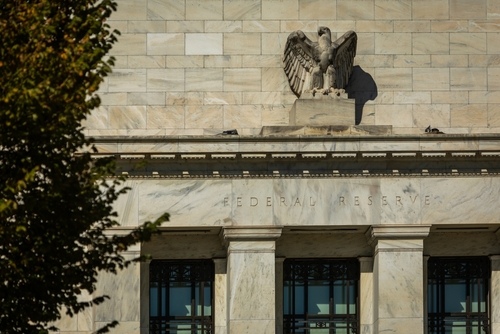NZD/USD extends the decline to near 0.5950, all eyes on Fed rate decision

- NZD/USD weakens to around 0.5955 in Wednesday’s early Asian session.
- The US Fed is unlikely to cut rates at its July meeting on Wednesday.
- Trade optimism and the potential extension of the US-China trade truce might help limit the NZD’s losses.
The NZD/USD pair extends its downside to around 0.5955 during the early Asian session on Wednesday. Uncertainty surrounding the United States (US) and China tariff truce continues to undermine the China-proxy Kiwi. Investors will closely monitor the US Federal Reserve (Fed) interest rate decision later on Wednesday, with no change in rates expected.
Analysts expect the US Fed will leave interest rates unchanged at 4.25% to 4.50% at the end of its two-day monetary policy meeting on Wednesday. Traders are now pricing in nearly a 97% odds of no change to interest rates at the July meeting, according to the CME FedWatch tool.
Fed members remain cautious about the potential inflationary impact of US President Donald Trump’s aggressive new tariff policy. Traders will keep an eye on the Fed Chair Jerome Powell's Press Conference after the policy meeting. A more hawkish-than-expected outcome from the meeting could boost the Greenback and act as a headwind for the pair.
The attention will shift to the US employment data for July, which is due later on Friday. The US economy is projected to add 110K jobs in July, while the Unemployment Rate is estimated to tick higher to 4.2% in July from 4.1% in June.
US Treasury Secretary Scott Bessent said that the US and China will continue talks over maintaining a tariff truce before the deadline in two weeks, and Trump will make the final decision on any extension. Bessent tamped down any expectation of Trump rejecting the extension. Trade optimism and a possible extension of the US-China trade truce could provide some support to the China-proxy New Zealand Dollar (NZD) in the near term, as China is a major trading partner of New Zealand.
New Zealand Dollar FAQs
The New Zealand Dollar (NZD), also known as the Kiwi, is a well-known traded currency among investors. Its value is broadly determined by the health of the New Zealand economy and the country’s central bank policy. Still, there are some unique particularities that also can make NZD move. The performance of the Chinese economy tends to move the Kiwi because China is New Zealand’s biggest trading partner. Bad news for the Chinese economy likely means less New Zealand exports to the country, hitting the economy and thus its currency. Another factor moving NZD is dairy prices as the dairy industry is New Zealand’s main export. High dairy prices boost export income, contributing positively to the economy and thus to the NZD.
The Reserve Bank of New Zealand (RBNZ) aims to achieve and maintain an inflation rate between 1% and 3% over the medium term, with a focus to keep it near the 2% mid-point. To this end, the bank sets an appropriate level of interest rates. When inflation is too high, the RBNZ will increase interest rates to cool the economy, but the move will also make bond yields higher, increasing investors’ appeal to invest in the country and thus boosting NZD. On the contrary, lower interest rates tend to weaken NZD. The so-called rate differential, or how rates in New Zealand are or are expected to be compared to the ones set by the US Federal Reserve, can also play a key role in moving the NZD/USD pair.
Macroeconomic data releases in New Zealand are key to assess the state of the economy and can impact the New Zealand Dollar’s (NZD) valuation. A strong economy, based on high economic growth, low unemployment and high confidence is good for NZD. High economic growth attracts foreign investment and may encourage the Reserve Bank of New Zealand to increase interest rates, if this economic strength comes together with elevated inflation. Conversely, if economic data is weak, NZD is likely to depreciate.
The New Zealand Dollar (NZD) tends to strengthen during risk-on periods, or when investors perceive that broader market risks are low and are optimistic about growth. This tends to lead to a more favorable outlook for commodities and so-called ‘commodity currencies’ such as the Kiwi. Conversely, NZD tends to weaken at times of market turbulence or economic uncertainty as investors tend to sell higher-risk assets and flee to the more-stable safe havens.






